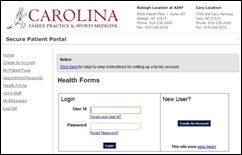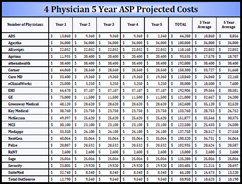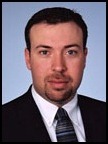Intelligent Healthcare Information Integration 10/11/10
About a week ago, I asked the wonderful Mr. H and the wonderful and lovely Inga to post a piece I wrote about the impending death knell of my chosen EHR, Peak Practice. While they are sensitive to their sponsors (though vendor neutral) and almost fanatically conscientious about their reporting reliability before posting such a “rumor,” typically seeking firm confirmation before such stories go live, they decided to run the story based upon our longstanding good relations and my assurance that my sources were impeccable. (Plus, I begged like a bratty three year old because this was my “Right EHR,” as I mentioned, and I was mad as heck to lose such a technologically-sharp and future-friendly tool!)
Thus, they ran the piece at my bequest. (Thanks, again, guys.) The official Peak sunset announcement was reportedly going to come out that same day, but, as you may have noticed, there’s been a Mormon Tabernacle-sized choir of crickets chirping since that post.
True, the vendor has not denied it. Also, true, I’ve had the story confirmed from multiple reliable sources since then. True, I’ve been told this was “the blog heard round the world” – or at least around the Peak Practice-related portion thereof. Third-hand true, I’ve heard that there have been lots of phones ringing off lots of hooks and lots and lots of lawyers making lots of unexpected overtime and lots of VARs wondering what they’ll do next for lots of clients who also happen to love – or at least, want to keep – Peak Practice. (I really feel for you lucky former MediNotes “e” clients who were migrated to Peak and who now get to go through yet another conversion – hoo boy.)
I’ve heard that I’ll get “upgraded” to one of the vendor’s other products. Don’t care what you say, guys: practically speaking, from a real world, workflow adjustment, staff frustration, conversion blues, and just, plain, personal preference perspective, none of what you’re offering looks like anything but a step down. One option runs dual databases, which provides no attraction. The closest would be the MyWay product, but the original vendor of that product seems to have done a better job advancing its technology, so if I were to go that way, why wouldn’t I go with them?
As I mentioned last time, it isn’t just the tool; the people, the corporate philosophy, the general “here’s how we deal with people” gestalt makes a huge difference to us small guys. Big companies sometimes seem to forget that talking corporation-to-corporation is a completely different language and doesn’t translate very favorably into the native trench grunt tongue.
I’ve been with this product for a long time and I’m pretty sure I’ve helped lots of people make lots of sales (and money) from my advocacy. I now know that some people appreciate that fact as I’ve had a slew of reach outs from multiple other EHR companies since last week’s piece. That makes an impression.
I have a distinctly different impression about the folks who now own my “Right EHR.”
Question: Is a new customer more important than keeping a current customer?
One of the wisest HIT people I know recently wrote me that “it is too bad that they won’t sell the product to someone else. They didn’t buy Eclipsys to bury a feared competitive product, but the result will be the same.”
The announcement is coming. The die is apparently cast. So, while the crickets seem to be chirping quite loudly right now, morning is coming, the crickets will fade, and the sun is about to rise on a new day – one which will no longer have a Peak.
From the soon to be Peak-free trenches…
“No quote today…I’m not feeling Peaked enough.” – Gregg Alexander
Dr. Gregg Alexander, a grunt in the trenches pediatrician, directs the “Pediatric Office of the Future” exhibit for the American Academy of Pediatrics and is a member of the Professional Advisory Council for ModernMedicine.com. More of his blather…er, writings…can be found at hisblog, practice web site or directly from doc@madisonpediatric.com.











Re: Walmart Health: Just had a great dental visit this morning, which was preceded by helpful reminders from Epic, and…